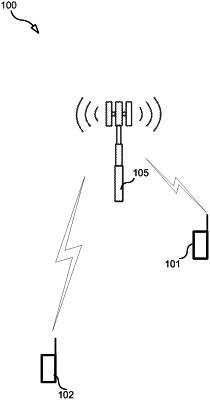| CPC H04J 11/004 (2013.01) [H04L 5/0037 (2013.01); H04W 72/0446 (2013.01)] | 12 Claims |

|
1. A method performed by a network node serving a first user equipment (UE) and a second UE, the method comprising:
the network node transmitting, during a first time slot, a first superimposed signal comprising a first message for the first UE and a second message for the second UE;
the network node receiving a message transmitted by the first UE indicating that the first UE was unable to decode the first message;
after receiving the message transmitted by the first UE indicating that the first UE was unable to decode the first message, the network node providing to the second UE a message indicating that the first UE was unable to decode the first message, thereby enabling the second UE to select an appropriate decoding scheme to use in a subsequent time slot, wherein the first superimposed signal is decoded by the second UE to obtain from the first superimposed signal the second message for the second UE, wherein the obtained second message and the first superimposed signal is used by the second UE to generate a residual signal comprising the first message for the first UE, and wherein the second UE buffers the residual signal;
after receiving the message transmitted by the first UE indicating that the first UE was unable to decode the first message, the network node transmitting, during a second time slot, a second superimposed signal comprising the first message for the first UE and a third message for the second UE, wherein the second UE uses the buffered residual signal and the received second superimposed signal to obtain the second message, and wherein the second UE uses the obtained second message and the received second superimposed signal to obtain the third message from the second superimposed signal; and
decoding the third message and adapting transmission parameters comprising (a) a power used to transmit the first message in the second time slot is greater than a power used to transmit the first message in the first time slot and (b) a rate used to transmit the third message in the second time slot is greater than a rate used to transmit the second message in the first time slot based on the decoding status of the first UE and the second UE.
|